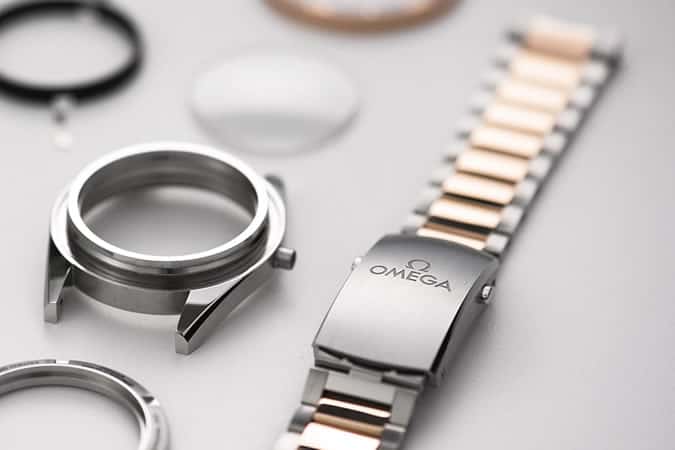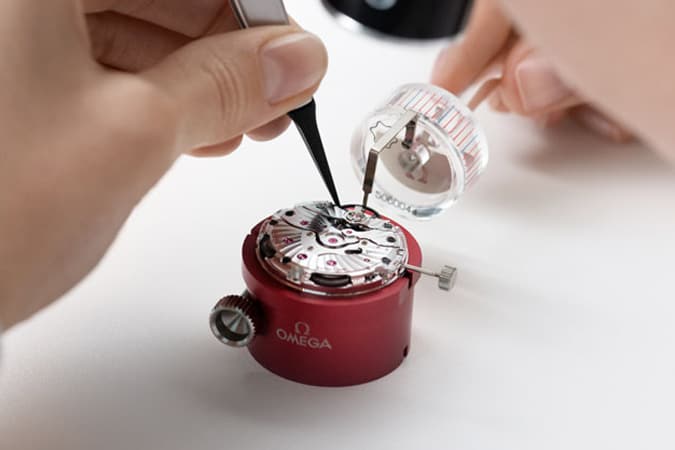The Evolution of Sex Part 3: On the Genetic Superiority of Women
Dec 24, 2025A Guide To Common Watch Repairs
- Sep 22, 2023
- 0 Comments
537

A bit like death and taxes, one of life’s other inevitabilities is that your watch will one day need to be serviced. If you’re not a door man, or you don’t have some other job that involves you behaving like a human battering ram, then chances are this will be a half-decade occurrence or, if you’re a quartz-only man, when the battery runs out – which can be anything from two years to 10.
For some, that’s a slap on the face (if not the wrist). Like cars and property, the expense associated with a wristwatch doesn’t end the moment you strap it on. The more expensive your watch, the more complicated it usually is. Which means there are more components to look after.
“Service intervals can vary by brand and model but in the main, manufactures recommend a service every three to five years to keep the timepiece in good condition,” explains Ian Haycock, head of technical services at Watches of Switzerland, which has over 40 individual brands in its display cases.
So, where should you take your prized possession when it needs a once over? What are the signs that something needs immediate attention and should you ever try some DIY watchmaking? FashionBeans is here to answer all those questions and more.
Quartz Watches
Some of the most affordable watches are powered by quartz and are relatively simple creations. When they stop working you can bet your bottom dollar it’s because of one thing: the battery. It will have either run out or it’s simply getting to the end of its life, and therefore it will need to be replaced.
Due to their simple make-up, this is an easy and cheap thing to fix – all you need to do is get the battery replaced, so head to your nearest jeweller and the problem is solved for around £20.
Another issue that can arise with quartz watches is when the buttons or pushers stop working properly. This is usually a wear and tear issue – dust and dirt can accumulate around the tiny spring that allows the pushers to do their job. It may not be as straightforward as that though, so if this is the case for your watch, a full service will be needed to ascertain whether that is indeed the problem – if it is, the springs will likely need replacing. Take your watch to a specialist service centre and ask them what they recommend.
Mechanical Watches
With mechanical watches, there are more individual parts and, therefore, more things that can go wrong. In terms of symptoms, you’re most likely to notice that time-keeping has slowed or is getting faster. And the most likely cause: lack of servicing.
“You have to treat it like a car,” says Oliver Pollock, founder of Luxury Watch Repairs, a Hatton Garden-based watch repair and servicing company that was set up due to Pollock’s frustration at not being able to get the vintage watches he was trading restored or serviced quickly and to a high-standard.
Rolex
“There are over 180 parts in a mechanical watch that need lubrication. If you don’t bring your watch in every four-to-five years then parts of it can wear, which can lead to losing or gaining time caused by lack of oil. We see 30-40 watches a day and generally when the watchmaker has had a poke around to determine a quotation, the majority of problems are caused by dry oil.”
So what are your options?
Rolex
A Full Service
The solution more often that not, Pollock says, is a full service. “[This looks at] all aspects of the watch to ensure it is performing as intended by the manufacturer from when the watch was originally sold,” he explains. If you say yes to a full service (and remember this is only ever a recommendation, you are under no obligation) ask whether the movement will be entirely dismantled and cleaned.
“If parts are worn, these are to be replaced and the movement to be re-assembled and re-lubricated,” says Pollock. You should also check to see if your crown and pushers have been replaced if they have been marked down on the service document as being worn.
Ask if the seals and gaskets have been replaced to ensure water resistance and, when it comes to polishing, you’ll be able to see easily if the case and bracelet has been buffed as any scratches should have disappeared.
 Omega
Omega
“We also place the watch on a five-day time-keeping and power reserve test [applicable to automatic and manual wind watches] to ensure the tolerance is as expected,” says Pollock. “The watch is then pressure- and water-resistance-tested, undergoes three separate stages of thorough quality control and backed up by our two-year warranty.”
If any of those things haven’t happened then your watch hasn’t been given a full service.
There are other problems that require a full service, and they usually read like a short horror story to most watch collectors. Brace yourself because these are the most common: a rattling or a strong vibration inside the watch (especially if the watch has been knocked or dropped); the glass being smashed (shards of glass can end up within the movement); grinding of the crown when changing the time or winding the watch; and condensation that appears and disappears on the sapphire crystal, which is a sign of water damage from not screwing down the crown properly.
Not every bump and bruise requires a full service, however.
Tag Heuer
Part Job Or Repair
This can include replacing scratched glass, a worn or damaged bracelet, polishing of the case and bracelet and de-magnetising a watch.
“A watch can become magnetised when it is exposed to everyday items and can cause the watch to act erratically,” says Pollock. “It is something we see quite often and can usually be rectified the same day.”
Vintage Or Antique Watch Repairs
If you’re in possession of an antique watch then chances are you already know you have to seldom wear it and handle it with more care than your grandmother.
“Vintage and antique watches are usually far less resistant to the elements than their modern counterparts,” explains Dr Rebecca Struthers, co-founder of specialist watch restorers Struthers London. “Aside from dust making its way into the movement, water damage can be a real issue.”
 eBay
eBay
While some retailers such as Watches of Switzerland will service and repair vintage watches, if you’re looking to repair a real antique then seeking out a specialist such as Struthers, rather than service centres, is your best bet. Some manufacturers also offer in-house services, but many have a cut-off date for the age of the watch.
“There aren’t any courses that teach vintage and antique watch restoration so the best restorers will usually have qualified with WOSTEP (Swiss) or the British Horological Institute before specialising. Look for a good portfolio, a lot of watchmakers use social media now so it’s easy to see the sorts of watches they work on and their feedback.”
What To Look For From The Place You’re Getting It Serviced
Many luxury watch brands, such as Vacheron Constantin, will insist you take your watch back to them so they can send it back to the manufacture for service or repair. However, if you’re going to opt for a third party then it’s all about accreditation – particularly if you’ve spent your savings on something.
Brands like Omega and Rolex make highly complex watches with myriad case, movement and bracelet combinations so you need to be assured the person pulling your precious Daytona apart and putting it back together knows exactly what they are doing.
Rolex
“We offer all types of watch repairs from a battery exchange and water resistance reseal to a full service and overhaul,” says Haycock. “Our watchmakers are brand-approved and accredited and have many years of experience.” And that is generally the case with renowned watch retailers – they have accreditation from most of the brands they stock to undertake repairing and servicing to a certain level before it may have to be returned to the manufacturer.
It’s when you start eschewing retailers in favour of service centres that you need to have your wits about you. “Look for accreditation and reviews,” says Pollock. “We’ve got over 1,000 and we use TrustPilot which tells our customers that all the reviews posted are from genuine users because TrustPilot verifies every one.
 Omega
Omega
“As for accreditation, it is so important. I know people talk about ‘time at the bench’ and while that is great in terms of experience, you need to know your watchmaker has had fundamental training. Take Omega, for example: it is one of the biggest brands, so even something like the Speedmaster has so many types of case and a watchmaker needs to know about the idiosyncrasies of each one before starting a repair. You only know that through getting proper accreditation.
“We have level 3 accreditation, which you are only awarded after going to Omega’s HQ for training, which our watchmakers have done.”
Dos And Don’ts
Do take your watch to be given a once over every four-to-five years, even if it’s not showing any signs of wear and tear. “Putting movements and full services to one side, you should still bring your watch in every four years or so because there are things such as gaskets and seals made from rubber, which deteriorate naturally over time, but they would only cost around £80-90 to get fixed,” says Pollock.
Don’t forget to maintain your automatics even when you’re not wearing them. You need to manually wind any watch you’re not wearing every four to five days to ensure the oils don’t dry out. A watch winder is a great investment if you have a few automatics in your collection.
Do ask questions. Ask the watchmaker what his credentials are, what exactly he intends to do to the watch, and what parts will need to be replaced. It’s not only a reassurance for you, it’s a simple way of finding out how qualified the watchmaker is.
Don’t always go for the quick and easy option. “While it may seem quicker and more cost effective to simply replace a damaged part, the damage can often be more complex than simply one worn or damaged part,” says Pollock. “To find and fix the damage, the watch may need to be dismantled, cleaned and re-assembled. That’s ultimately a service in itself and does of course take a significant amount of time and care.”
What Can You Do At Home?
DIY watch repairs is an area of much debate. Rolex recommends gentle cleaning – a cloth to help your prize Submariner keep its lustre and soap water and a soft brush to get any accumulated dirt off the case and metal bracelet (don’t do this on a leather one). However, Haycock disagrees.
“We would not recommend any type of repair is attempted at home. Watches are complicated and require specialist tools, equipment and skills in order to carry out a reliable repair,” says its head of technical services. Pollock agrees.
“We don’t advise our customers to try anything at home. Even a strap change can lead to a badly scratched case if something slips,” he says. “If your watch is water-resistant and has a rubber strap then you could get a toothbrush and some warm water and soap to clean the strap, but we can give it an ultrasound and steam clean for a small price.”
In other words, put that tool kit you bought on Amazon away. There are lessons you can take (for example, the British Horological Institute offers five-day courses that cover the basics of mechanical watch repair) but unless you’re a watchmaker, chances are you will do more damage to the watch and likely void its warranty.
Let the experts do what they are paid for and your watch (and, by extension, your bank balance) will be very grateful indeed.
Publisher: Source link







